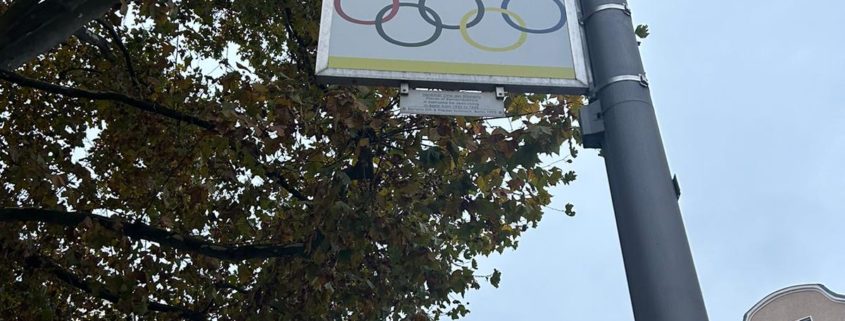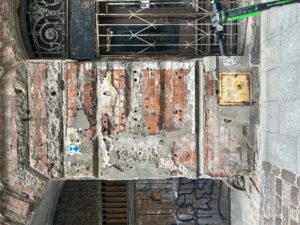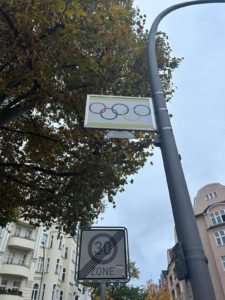Living Spaces as Memorials and Places of Memory
By Andrew Emerson
Throughout human history there is no shortage of places of tragedy. Brutality and slaughter have followed humankind wherever we have traveled and the spaces where these actions occur often become haunting reminders of infinite human cruelty. What happens to those who remain, those who call these spaces home and have to grapple with the past in their daily lives? How does a parent feel having their child playing at a park a few yards away from a memorial to Jewish people who were dragged from their homes at night by the Nazi regime? Is there a level of expected indifference and normalcy for the inhabitants? If not, how does one bear the weight of such a painful history day in and day out? Are these memorials particularly effective in communicating their intent and getting their message across or can the history of these places fade into the background of day-to-day life?
Visiting the site of the Warsaw Ghetto today it’s hard to imagine the hardships and atrocities that took place there. While walking through Warsaw, seeing the neighborhoods and homes where one of the most horrific crimes endured in all of human history took place can be deeply unsettling and jarring. The Warsaw Ghetto was a place where hundreds of thousands of Jewish people from across Europe were detained by the Nazis. In this place many of them were shipped off to their deaths in camps littered across eastern Europe, most to Treblinka. In April 1943 the community trapped within the walls of the Ghetto decided it was necessary, despite their horrific circumstances, to take up arms against their captors and to die fighting. In the aftermath of this daring act of resistance the Ghetto was liquidated and its remaining inhabitants were dispersed and forced into hiding or sent to death camps. It’s hard to fathom how much those interred there suffered during its tenure. It is also hard to imagine after the war how a resident returns and rebuilds knowing what occurred. It was also fascinating to see how citizens grapple with this history today. I imagine myself as a modern resident of Warsaw walking through the lines of the old neighborhoods and constantly being reminded of the travesty. Bullet holes from the uprising can still be seen within some of the walls. There is no shortage of reminders for the residents of Warsaw. Forgetting is simply not an option after having suffered so greatly.
Traveling to Berlin, the center of where these horrific crimes were organized and planned, there was a heartbeat of Jewish life thriving in the city before the war. The Bavarian quarter was a neighborhood with a thriving Jewish community boasting famous intellectuals such as Albert Einstein and Hannah Ardent before the Nazis came to power. When the Nazis took control over Germany this Jewish identity within the heart of Berlin was slowly stamped out leading up to the Second World War. During my readings I heard of residents who were living in the Bavarian quarter at the time and can still remember the SS officers and Gestapo dragging residents from their homes in the middle of the night. Today, sprinkled around the neighborhood are signs outlining anti-Jewish laws that were passed in Germany underneath nazi rule. A constant and immediate reminder of the tragedy that befell the residents of this cozy neighborhood. While walking through this space and reading these signs I kept imagining to myself what it would feel like to live here. I thought of looking at these signs and having them as a constant reminder of the suffering that took place here. It’d be an emotional weight to carry and I wondered of the numbness and normalcy that it could foster within the populace having to grapple with these themes in your own home. I was happy to find I was incorrect. Through my reading I have discovered that something quite wonderful has occurred as the result of these signs. There’s knowledge and respect from residents who have engaged with the history of their space. What these signs have accomplished is an education in the populace and created a community very well aware of its history.
This made me reflect on the spaces I have inhabited in my own life. When I was a child I had a birthday party at a place called the Broadway Armory in Chicago. It was a wide open gym space where I was able to invite all my classmates and we got to play an assortment of games. It’s a memory I remember fondly. However, I later learned as a teenager that the Broadway Armory was the meeting place of the Ku Klux Klan in the late 18th and early 19th century. I’ve returned to the armory since learning this and I have come to find that there is no commemoration to this history. It’s a buried memory that people don’t want to think about or remember. It made it patently obvious to me how important these memorials are even if it’s something small. Something to commemorate a tragic history and to bring about these conversations is deeply needed to even begin a process of healing. It is my belief that this history remaining esoteric and hidden is a large cause of the divides you see in the United States today. The perpetrators and bystanders have been allowed to forget, while the victims live in the shadows of a history that consumes them. This is the importance of memory and memorial; these histories must be brought to light so there can be an awareness and some semblance of an education.





